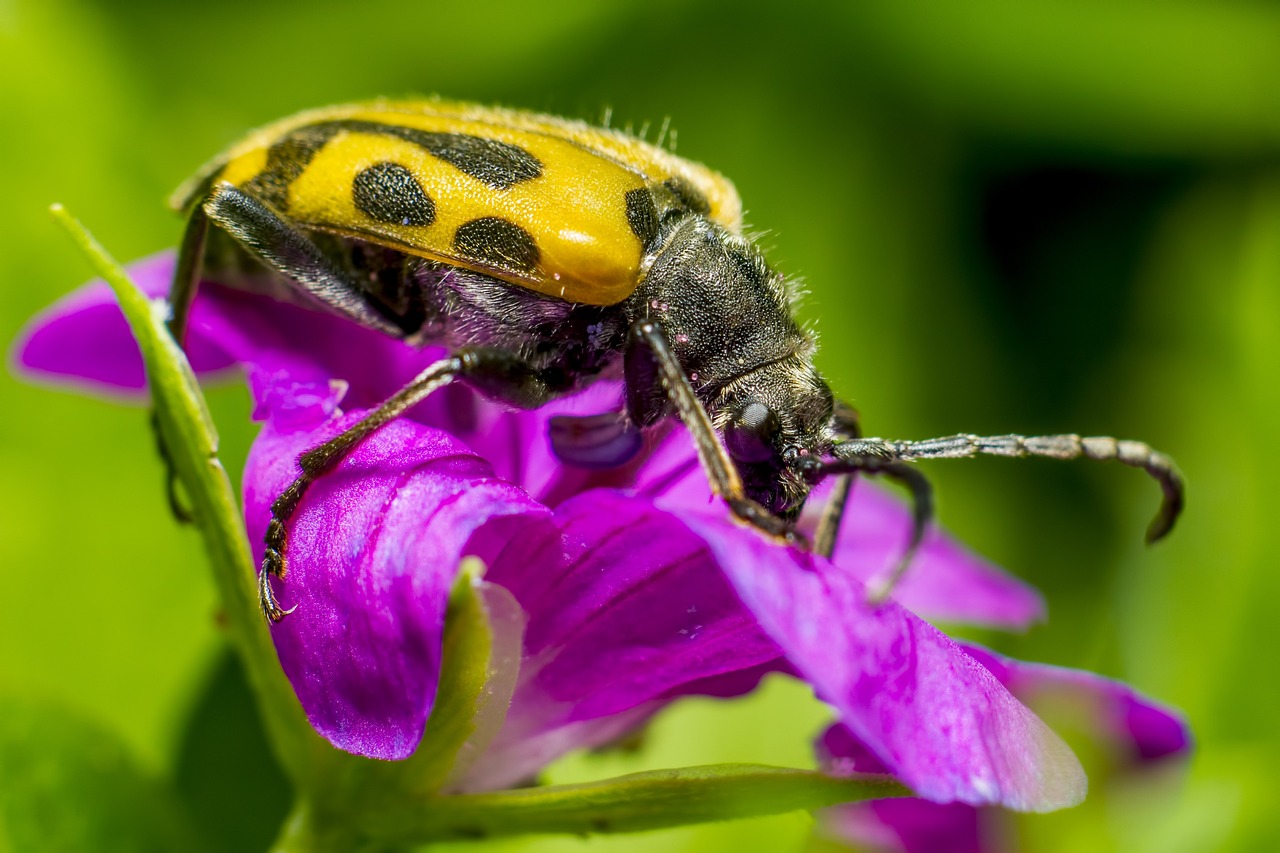Brachyta interrogationis, commonly known as the Question Mark Beetle, is a species of longhorn beetle in the family Cerambycidae. Its name derives from the distinctive markings that resemble a question mark.
Description
- Size: The beetle measures about 7-11 millimeters (0.28-0.43 inches) in length.
- Coloration:
- Body: The color is typically a mix of brown, black, and sometimes reddish hues. The body is often covered with fine, scale-like setae that give it a fuzzy appearance.
- Markings: The elytra (wing covers) often have a pattern of spots or markings that can resemble a question mark, which is the source of its common name.
- Antennae: As a longhorn beetle, it has long, antennae that can be up to twice the length of its body. These are often banded or striped.
Habitat
- Distribution: Found across Europe, including temperate and Mediterranean regions.
- Preferred Environment: It thrives in deciduous and mixed forests, woodland edges, and sometimes urban green spaces with abundant vegetation and dead wood.
Behavior and Ecology
- Feeding:
- Larvae: Feed on decaying wood and plant material, contributing to the decomposition process.
- Adults: Feed on leaves and flowers. Adults are often seen on flowers or vegetation during the day.
- Life Cycle:
- Eggs: Laid in decaying wood or other suitable substrates.
- Larvae: Develop within decaying wood, feeding on it for several months to a year.
- Pupation: Occurs in the wood or soil.
- Adults: Emerge from the pupal stage and are active for several weeks to months, mating and laying eggs.
Conservation
- Status: Generally not considered endangered, but habitat loss and changes in forest management can impact its population.
- Conservation Efforts: Protecting forest habitats and ensuring the availability of decaying wood is crucial for maintaining healthy populations.
Observing Brachyta interrogationis
- Best Times: Active from late spring to early autumn.
- Watching Tips: Look for them on flowers or near decaying wood. Their distinctive markings can help in identification.
Interesting Facts
- Name Origin: The “Question Mark” refers to the pattern on its elytra, which resembles a question mark.
- Antennal Length: The long antennae are used for detecting chemical signals and navigation.
Summary
The Question Mark Beetle (Brachyta interrogationis) is a striking longhorn beetle recognized for its unique markings and long antennae. Found throughout Europe, it plays a role in decomposing organic matter in forested environments. Its distinctive appearance and ecological role make it an intriguing subject for study and observation.
Visited 939 times, 4 visit(s) today
Views: 1388
Subscribe to the newsletter:
